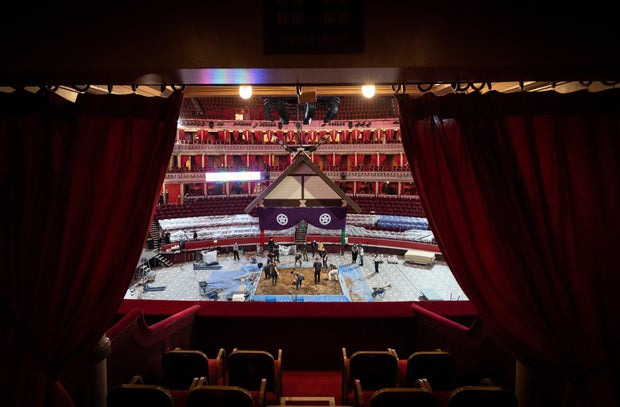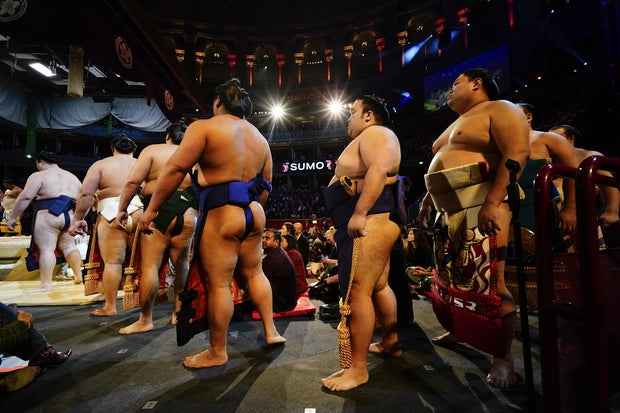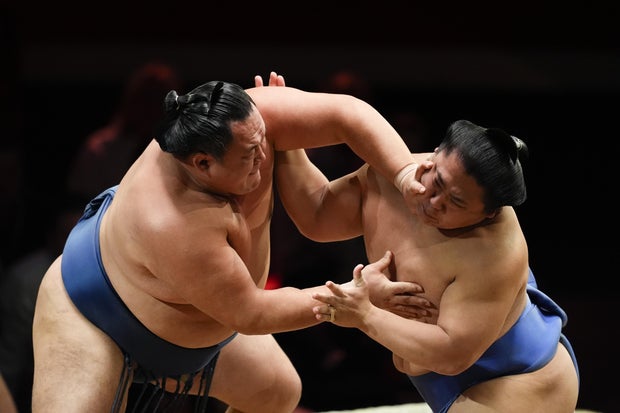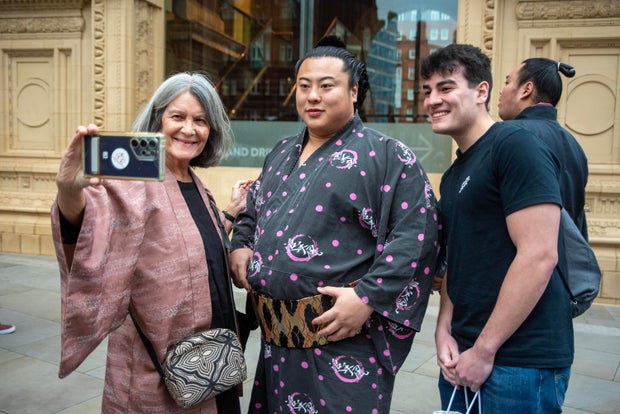London – The world of professional sumo wrestling expanded beyond Japan for only the second time in its centuries-long history on Wednesday night when fighters clashed in a specially built ring in the center of London's Royal Albert Hall.
The Grand Sumo Tournament will be held at the iconic site of the British capital. — the most important competition in this sport, which is approximately 1,500 years old. — for the second time, he recruited more than 44 professional wrestlers, or Rikishi, to compete in 100 bouts over five days. The only time the tournament was held outside Japan was in 1991, when it was also held at the Royal Albert Hall.
Bringing sumo to London is not easy, as Japan's modern national sport is rooted in two thousand years of tradition, intertwined with the Shinto religion, and is thus treated with the utmost respect and protection to ensure its rituals and norms are respected.
Ryan Pierce/Getty
“One of the things we've worked very hard on is making sure we have a good understanding of the cultural and religious significance of sumo,” Matthew Todd, program director at the Royal Albert Hall, told CBS News.
He said attention to detail is “really important to the authentic presentation we can do here.”
This meant shipping 11 tons of clay from Japan to build the ring, or dohyo, in the center of the concert area where the wrestlers compete. The shipping containers were at sea for three months while making the voyage. A large team of ring attendants (yobisdashi) also had to come from Japan. — along with 11 translators who help them communicate with British workers.
Ryan Pierce/Getty Images
The roof of the dohyo, which now hangs from the ceiling of the Albert Hall, was built in the UK, but its design is taken straight from traditional Japanese Shinto shrines, which Todd said “helps to show that this is a sacred place” where rituals and sacred ceremonies are held as part of the tournament.
He said it was a vital step to ensure proper respect was given to Shinto gods before fights.
Sumo is deeply intertwined with Japanese culture and religion, which may be difficult for many Western sports fans to understand. According to legend, it began as a ritual asking the gods for a bountiful harvest, but over nearly 2,000 years it has evolved into the sport it is today, attracting athletes mainly from Japan, but also from around the world.
Many of the recent champions have come from Mongolia, and this year's tournament features two rishikis from Ukraine. Although Americans have had success in past tournaments, this year's tournament in London does not feature a single Rishiki from the United States.
Jordan Pettitt/PA Images/Getty
The nuances of wrestling competitions themselves can also be difficult to fully understand: 82 winning moves called kimirats, numerous ranks and divisions, and many other rules. So to help translate it all for a predominantly Western audience, the Royal Albert Hall provides ear-to-ear commentary in English as well as video replay screens describing and explaining fights that can sometimes be over in a matter of seconds as the contestant is forced out of the ring.
The wrestlers themselves live incredibly regimented lives. They are prohibited from driving cars and, somewhat paradoxically, from eating breakfast, and usually have to take long naps after a large lunch to help them gain weight.
The average weight of a rikishi is about 330 pounds, but some weigh up to 550 pounds.
Jordan Pettitt/PA Images/Getty
However, during their visit to the British capital, they were given some time off to enjoy themselves. — Organizers likely see value in some degree of publicity.
In the lead-up to the tournament, social media platforms were full of photos and videos of wrestlers dressed in traditional kimonos, taking in the sights of London.
This week the Albert Hall will also be graced by the presence of two yokozuna, the highest rank of all sumo wrestlers. The word yokozuna is usually translated as great champion, but it is literally translated as “horizontal rope”, referring to the special rope worn around the waist to show one's rank.
Cristian Elek/SOPA Images/LightRocket/Getty
Once a rishiki receives the rank of yokozuna, they retain it until retirement. In nearly 400 years of professional sumo, only 75 men have achieved the vaunted status of grand champion. This honor usually requires not only several consecutive championship wins, but also the approval of a special board that evaluates the rishiki on their wrestling skills, as well as a number of other personal qualities.
The tournament is scheduled to end on Sunday, when the wrestler with the most wins in the ring will be crowned this year's champion.
The field is considered wide open this year but many, especially at home in Japan, will be hoping 25-year-old Yokozuna Onasato, the country's first grand champion in nearly a decade, will emerge victorious.












